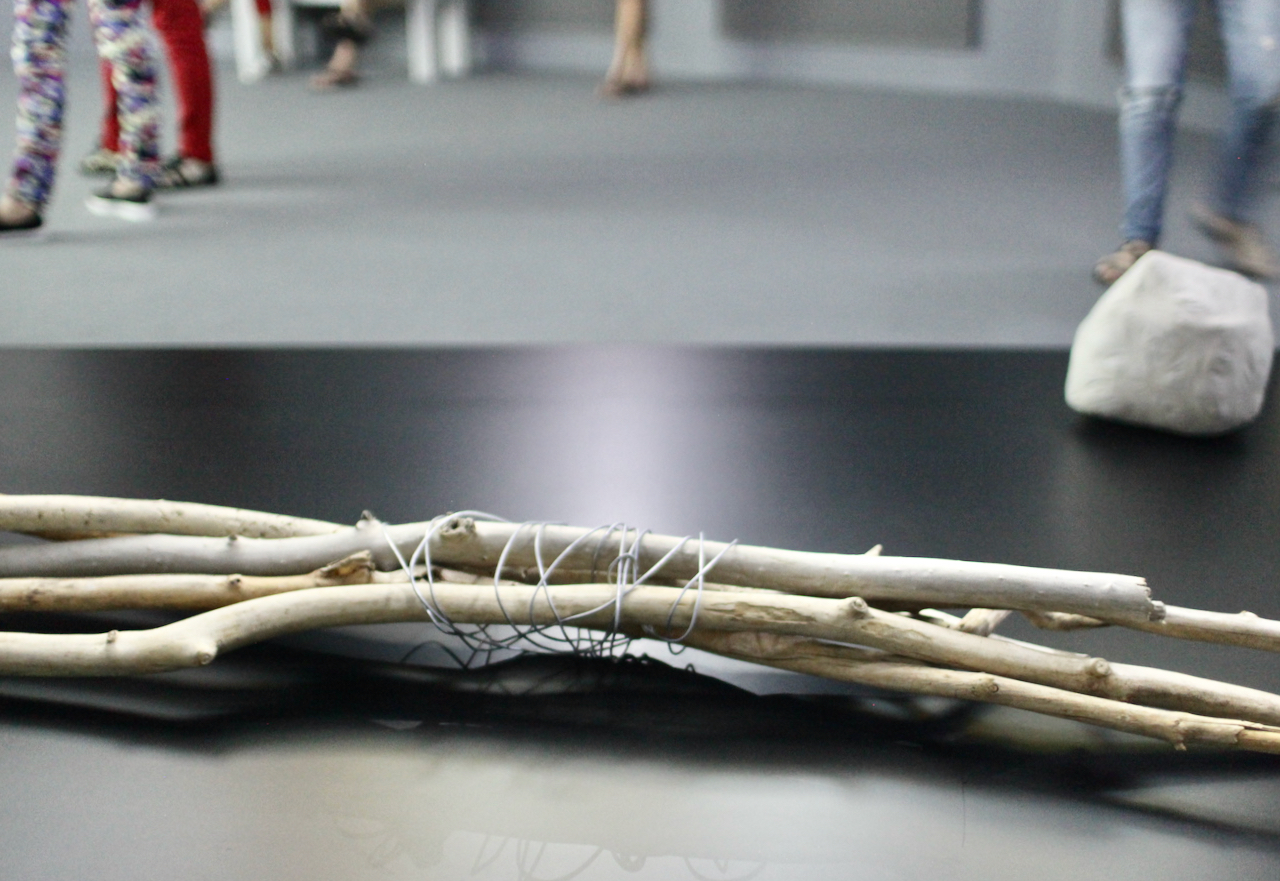Gillman Barracks, built in 1936, was a British military outpost and then HQ of the School of Combat Engineering (Singapore Armed Forces). Before the premises were vacated in 1990, some buildings were used for the Singapore American School. Since it re-opened for commercial purposes, Gillman Barracks found a new life as an arts enclave. It is home to the Centre for Contemporary Arts. This was where I headed to visit Joan Jonas’ exhibition.





Joan Jonas’ installation and exhibition, They Come to Us Without a Word , is travelling the world, just having left Singapore for Montreal, Canada. Joan Jonas is a multidisciplinary artist, a pioneer in video and performance, and a professor emerita at the Massachusetts Institute of Technology.
Originally commissioned for the United States Pavilion at the 56th Venice Biennale (2015), They Come to Us Without a Word opened January 22, 2016 in Singapore. On first look, if unfamiliar with Joan Jonas’ work, it may be unclear the depth of what we are asked to go with the layers of the show and our own lives.
Perhaps the visitor would think it is about animals, children, and the environment. It is, and more.
This exhibition is about the environment and how humans have been interfering and impacting the ecosystem. Joan Jonas is raising awareness, without judgement of what is good and what is bad, and allows the viewer to follow the questions that arise about our footprint in the world. One room is dedicated to fish and another to bees, without whom we have been told humans will follow the extinction route quite quickly. In one video, the kids dance the wiggle dance, the bee dance. Unscripted. Somewhat chaotic, delightful being so innocent and pure. Honest and raw. They Come to Us Without a Word is about life, and it is about death. Life. Death. Extinction. Ghosts. Myths.
Although the idea of my work involves the question of how the world is so rapidly and radically changing, I do not address the subject directly or didactically. Rather the ideas are implied poetically through sound, lighting, and the juxtaposition of images of children, animals, and landscape.
Joan Jonas
They Come to Us Without a Word is multi-layered and multifaceted. In four rooms, two large videos are the main focus. It is tempting to find a spot to watch both simultaneously, to get the full, full sense, to understand the dialogue between the two. The imagery is captivating, deliciously disjointed, even cryptic, and yes, spooky.



The space is lit as if by moonlight, a wonderful soothing darkness that wraps around you with softness and mystery. Yet darkness is darkness and evokes a level of discomfort in many people. It feels tenuous, as if not everything is visible, and much is still hidden in the shadows.
Then we step into the Mirror room. The mirror has long been a visual device for Joan Jonas. Mirrors not only change the space; they reflect the audience and perhaps some aspects that have surfaced from their experience in the space.
Do we like what we see in the mirror? Do we dare look? Or are we frightened by ghostly apparitions of our former selves, the “we” who dreamt the dream? Sometimes we become aware of our actions and decisions when they are mirrored back to us. To be a perfect mirror for someone else is a great gift.
The undulating light from the videos creates wonderful shadows that build into the underlying narrative; what links each room are voiceovers of ghost stories from Cape Breton Island, Nova Scotia in Canada. A New York native, Joan Jonas spends many “productive” weeks at her summer home and studio by the ocean in eastern Canada. Cape Breton, haunted by loss and tragedy, has a long oral tradition of ghost stories. As Joan Jonas has said, everything is haunted. “We are haunted, the rooms are haunted.”
What are ghosts? Lost souls yet to find their way home? What have we ourselves done in our lives that we have not allowed into our hearts and the womb of forgiveness? What regrets can we see emerging from the shadows, appearing in the corner of our eyes? As Joan Jonas has said, things are disappearing, becoming extinct. While everything is impermanent, the qualities that make us human are not. How can we allow these to be expressed more bravely in face of fragility?
The children and the animals in They Come to Us Without a Word remind us that the lines between the seen and the unseen are less rigid. Kids and animals have the sight and have an extra sense of the otherworldly. They remind us to live in the moment and be curious.
Sound is an important and powerful element here, as in all of Joan Jonas’ work. The music includes songs by the Norwegian Sami joik artist Ánde Somby and long-time collaborator Jason Moran. We also experience the elements in a ghostly manner.
They Come to Us Without a Word grew out of her earlier work Reanimation (2012), inspired by Nobel Laureate Icelandic author Halldór Laxness and his poetical rendering of the natural landscape Under the Glacier. The initial name of Joan Jonas’ exhibition was Glacier.
Under the Glacier is very intriguing literature, one that defies categorization with an aura of the cosmic, mythical, and otherworldly. It is a novel that calls for continual re-reading, as Joan Jonas herself has done. A revealing that leads one to the questioning of life, spirituality, and our role in each other’s lives. This sense of expansiveness, interrelatedness, and mystery also beautifully and breathlessly winds through Joan Jonas’ They Come to Us Without a Word.
I originally wrote about Joan Jonas‘ exhibition for Volume 13 of It’s All Well + Good Magazine. I published this magazine from 2013, with 16 volumes.
They Come to Us Without a Word
NTU Centre for Contemporary Art Singapore
Block 43 Malan Road
Gillman Barracks
Singapore
